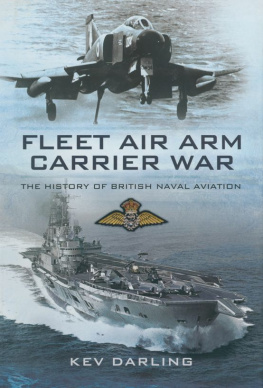John Winton - Carrier Glorious: The Life and Death of an Aircraft Carrier (Warship Battles of World War Two)
Here you can read online John Winton - Carrier Glorious: The Life and Death of an Aircraft Carrier (Warship Battles of World War Two) full text of the book (entire story) in english for free. Download pdf and epub, get meaning, cover and reviews about this ebook. year: 2022, publisher: Sapere Books, genre: Non-fiction. Description of the work, (preface) as well as reviews are available. Best literature library LitArk.com created for fans of good reading and offers a wide selection of genres:
Romance novel
Science fiction
Adventure
Detective
Science
History
Home and family
Prose
Art
Politics
Computer
Non-fiction
Religion
Business
Children
Humor
Choose a favorite category and find really read worthwhile books. Enjoy immersion in the world of imagination, feel the emotions of the characters or learn something new for yourself, make an fascinating discovery.
- Book:Carrier Glorious: The Life and Death of an Aircraft Carrier (Warship Battles of World War Two)
- Author:
- Publisher:Sapere Books
- Genre:
- Year:2022
- Rating:3 / 5
- Favourites:Add to favourites
- Your mark:
- 60
- 1
- 2
- 3
- 4
- 5
Carrier Glorious: The Life and Death of an Aircraft Carrier (Warship Battles of World War Two): summary, description and annotation
We offer to read an annotation, description, summary or preface (depends on what the author of the book "Carrier Glorious: The Life and Death of an Aircraft Carrier (Warship Battles of World War Two)" wrote himself). If you haven't found the necessary information about the book — write in the comments, we will try to find it.
Carrier Glorious: The Life and Death of an Aircraft Carrier (Warship Battles of World War Two) — read online for free the complete book (whole text) full work
Below is the text of the book, divided by pages. System saving the place of the last page read, allows you to conveniently read the book "Carrier Glorious: The Life and Death of an Aircraft Carrier (Warship Battles of World War Two)" online for free, without having to search again every time where you left off. Put a bookmark, and you can go to the page where you finished reading at any time.
Font size:
Interval:
Bookmark:
CARRIER GLORIOUS
The Life and Death of an Aircraft Carrier
John Winton

TABLE OF CONTENTS
ACKNOWLEDGEMENTS
A great many people have contributed their memories, letters, journals and diaries to this book. I wish particularly to thank the late Mrs Hope Slessor, Mrs Michael Riviere (Bridget DOyly-Hughes), and Captain J.B. Heath, OBE, RN. I also wish to thank:
The late Vice-Admiral Sir Conolly Abel-Smith, GCVO, CB; Mrs Josephine Ash. Mr Ron Birch; Air Vice-Marshal Nigel Blair-Oliphant, CB, OBE; Rear-Admiral A.S. Bolt, CB, DSO, DSC; the late Captain Jack Broome, DSC; Mr David Brown, MEng, CEng, FRINA, RCNC; Mr Joe Brown; the late Captain David Buchanan-Dunlop, DSC.
Commander J.K. Cannon; Mr. Alf Carpenter; Lieutenant-Commander John Casson, OBE; Captain Nigel Clogstoun-Willmott, DSO, DSC*; Mr Michael Cobb; Mr Bill Collier; Mr Sebastian Cox; Mr T.P. Cox; Air Vice-Marshal Peter Cracroft, CB, AFC; Air Chief Marshal Sir Kenneth Cross, KCB, CBE, DSO, DFC.
Admiral Sir William Davis, GCB, DSO, DL; Mr Martin Dawes; Mr Jim Dixon; Rear-Admiral V.DA. Donaldson; Mrs Patricia Donnan; Lieutenant S. Donovan, MBE; Mr Walter Drax; Mr Graham Roy Drucker; Lieutenant-Commander George Duncan, OBE; Mr Trevor Dunhill.
Mr George Elliott; Mr David Ellison; Lieutenant-Commander John Ellyatt, DSC, VRD, RNVR; Air Vice-Marshal Geoffrey Eveleigh, CB, OBE; Commander Robert Everett, OBE.
Air Commodore T.P.P.F. Fagan, CBE; Squadron Leader Tony Fairbairn; Captain H.L. St. J. Fancourt, DSO; Fleet Air Arm Officers Association; Captain Godfrey French, CBE.
Wing Commander R.P. Garnons-Williams, AFC; Commander G.R.M. Going, DSO, OBE; Mrs Betty Goodman; Captain J.R. Gower, DSC; Captain The Rev. Geoffrey Gowlland; Mr Eric J. Grove, MA.
Commander Hugh Haggard, DSO, DSC; the late Commander J. W. Hale, DSO; Commander R.C. Hay, DSO, DSC; Mrs Nora Healiss; Mrs Betty Heycock; Vice-Admiral Sir Arthur Hezlet, KBE, CB, DSO, DSC; Mr Roy Hinton; Mr Cyril Hobbs; Mr Charles Hodgson; Mrs Lilian Hooke; the late Admiral Sir Charles Hughes Hallett, KCB, CBE; Mr John Hull.
Air Commodore Patrick Jameson, CB, DSO, DFC; Commander C.A. Jenkins, OBE; Mr David Jolliff.
Lieutenant-Commander Arthur Keep; Captain C.L. Keighley-Peach, DSO; Mr Ludovic Kennedy; Lord Keyes.
Commander A.F.C. Layard, DSO, DSC; Commander W. Sitwell Lea OBE; Lieutenant H.W. Le Breton; Captain E.G. Le Geyt, DSC; Lieutenant-Commander R.T. Leggott, MBE; Air Commodore L. Levis OBE; Mr David Lidstone; Mr Stafford Lidstone; Captain J.S.S. Litchfield, OBE; Captain Peter G. Loasby, DSC.
Commander H.P. Madden; Major A.E. Marsh, Royal Marines; Lieutenant-Commander Derek Martin; Lieutenant-Commander Robert McBride; Mr Colin McFadyean; Major-General J.L. Moulton, CB, DSO, Royal Marines. Mr James ONeill.
Mr William Hugh Parkin; Captain Jasper Parrott, CBE; Major R.T. Partridge, DSO, Royal Marines; Mr James Pickering, AFC, AE, FGS, FSA; Mr John Pinkerton.
Rev Jim Radcliffe; Mr Tom Rivers; Mr Michael Riviere; Commander R.H.S. Rodger, OBE; Mr Nicholas Roskill; Captain G.A. Rotherham, DSO, OBE; Wing Commander Peter Rusher, DSO.
Commander N.J. Scarlett-Streatfeild, DSC; Air Commodore G.P. Seymour-Price, CBE, AFC; Group Captain John Shepherd; Mr Tim Slessor; Commander John Seymour Stead; Mrs Mollie Steel; Miss Marion Stewart; Captain A.W.F. Sutton, CBE, DSC.
Dr Geoffrey Till; Rear-Admiral A.D. Torlesse, CB, DSO.
Commander A.O. Watson; Captain T.A. Wells; the late Captain A.S. Whitworth, DSC; Rear-Admiral Guy Willoughby, CB; Mrs M. Wollacott; Mr David Woodcock; Lieutenant-Commander Gerard A. Woods; Mr David Wright.
CHAPTER 1: FROM BATTLE CRUISER TO AIRCRAFT CARRIER
GLORIOUS HAD HER beginnings in an old mans dream. In October, 1914, Winston Churchill, who was then First Lord of the Admiralty, brought back not without misgivings Lord Fisher to be First Sea Lord. Since 1908, and very probably earlier, Fisher had a dream of mounting an expedition to the Baltic, to land an army on the Pomeranian coast, ninety miles from Berlin, and thus achieve one smashing, decisive coup which, he believed, would bring Germany to her knees.
No sooner had he returned to the Admiralty than Lord Fisher, with what Churchill called explosive energy, summoned to London all the naval constructors and ship-building firms in the country and, as Churchill said, in four or five Glorious days, every minute of which was pure delight to him, put in hand a huge construction programme for ships ranging from battle cruisers to small barges. The total number in this unparalleled Armada was 612, including no less than five light-draught thirty-three knot battle cruisers. According to Fishers Memories , this colossal building programme was authorized at a meeting held on 3 November, 1914, only four days after Fisher became First Sea Lord. In fact, not quite all those vessels were actually ordered on that day, the chief emphasis of that meeting being the ordering of submarines, and some of the vessels ordered, particularly the destroyers, were intended for use in the North Sea by the Grand Fleet. Nevertheless it was that meeting which provided the main impetus for the Baltic Project ships, of which Glorious was one.
In the event, the Baltic Project was never carried out, but many of the ships for it were built, including three light cruisers (so called because Treasury approval had already been obtained for light cruisers). Fisher himself called them large light cruisers. To Churchill they were an old mans children and their parent loved them dearly.
Their names were Furious , Courageous and Glorious . They certainly were large, at more than 18,000 tons, and heavily armed: Furious eventually had two 18 guns, and the other two ships had four 15. As Fisher explained, The Furious and all her breed were not built for salvoes. They were built for Berlin, and thats why they drew so little water and were built so fragile Their guns with their enormous shells were built to make it impossible for the Germans to prevent the Russians from landing on the Pomeranian coast.
Furious design took an independent path from an early stage, but Courageous and Glorious remained sister-ships. A minute by Fisher on 29 January, 1915, stated that it was intended to build these light cruisers within the year. Matters did not move quite as fast as that, but still astonishingly quickly by todays standards. The designs were begun on 21 January and the ships officially ordered on 29 January. The first drawings and the body plan were sent out to the building firms Armstrongs Naval Yard, at Walker on the Tyne, for Courageous , Harland & Wolff at Belfast for Glorious on 6 February, 1915. Two days later Fisher was writing to Beatty: I forget if I told you, we have started the new light cruisers [Fishers inverted commas] which will join your flag next December. Once again, Fisher was being optimistic, but the keel plates were laid very quickly Courageous on 28 March, 1915, Glorious on 1 May and the ships were launched Courageous on 5 February, 1916, Glorious on 20 April.
Besides the main armament, the ships had eighteen 4-inch BLIX guns in six Mark I triple mountings, arranged in the open on the shelter deck, twelve firing on either broadside; two 3-inch high-angle guns; four 3-pounder Hotchkiss saluting guns; five Maxim guns; and two submerged torpedo tubes in a torpedo room forward. Six pairs of 21-inch torpedo tubes were fitted later.
The main machinery was of the type fitted in the light cruiser Champion and consisted of four geared turbines, each driving one propeller shaft, and each with an estimated 22,500 shaft horsepower, to give a total of 90,000 SHP at about 340 shaft rpm. There were four engine-rooms, one to each shaft. Steam was provided at 235 lbs/sq in pressure by eighteen Yarrow small-tube boilers, in three boiler-rooms, six to a boiler-room. The engines were made by Messrs Parsons ( Courageous ) and Harland & Wolff ( Glorious ).
Next pageFont size:
Interval:
Bookmark:
Similar books «Carrier Glorious: The Life and Death of an Aircraft Carrier (Warship Battles of World War Two)»
Look at similar books to Carrier Glorious: The Life and Death of an Aircraft Carrier (Warship Battles of World War Two). We have selected literature similar in name and meaning in the hope of providing readers with more options to find new, interesting, not yet read works.
Discussion, reviews of the book Carrier Glorious: The Life and Death of an Aircraft Carrier (Warship Battles of World War Two) and just readers' own opinions. Leave your comments, write what you think about the work, its meaning or the main characters. Specify what exactly you liked and what you didn't like, and why you think so.
















